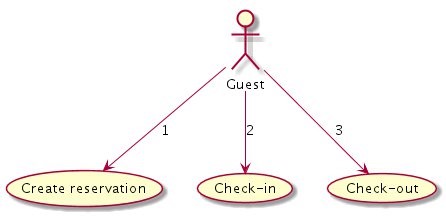AWS Database Blog
Tag: DynamoDB
Applying best practices for securing sensitive data in Amazon DynamoDB
October 2023: This post was reviewed and updated to include the integration of Amazon DynamoDB Dataplane operations in AWS CloudTrail. The first post of the series, Best practices for securing sensitive data in AWS data stores, described some generic security concepts and corresponding AWS security controls that you can apply to AWS data stores. Using […]
Introduction to Amazon DynamoDB for Cassandra developers
This blog post introduces Amazon DynamoDB to Cassandra developers and helps you get started with DynamoDB by showing some basic operations in Cassandra, and using AWS CLI to perform the same operations in DynamoDB. Amazon DynamoDB is a fully managed, multiregion, multimaster NoSQL database that provides consistent single-digit millisecond latency at any scale. It offers […]
Learn to build NoSQL database-driven applications using Amazon DynamoDB with new edX course
Modern organizations are constantly looking for ways to get more value from their data, making it increasingly important for teams and individuals to understand how to build database-driven applications in the AWS Cloud. As the data landscape continues to evolve to include more cloud-based databases, an increasing number of developers are choosing non-relational databases that are […]
Implementing priority queueing with Amazon DynamoDB
Queuing is a commonly used solution for separating computation components in a distributed processing system. It is a form of the asynchronous communication system used in serverless and microservices architectures. Messages wait in a queue for processing, and leave the queue when received by a single consumer. This type of messaging pattern is known as […]
Your guide to Amazon DynamoDB sessions, workshops, and chalk talks at AWS re:Invent 2019
Last updated: December 3, 2019 AWS re:Invent 2019 is almost here! This post includes a complete list of Amazon DynamoDB sessions, workshops, and chalk talks at AWS re:Invent 2019. Use the information on this page to help schedule your conference week in Las Vegas this year. If you still haven’t registered for re:Invent and need some […]
Choosing the right number of shards for your large-scale Amazon DynamoDB table
As a general design best practice, you can optimize your use of Amazon DynamoDB throughput capacity by designing your application for uniform read and write activity across all logical partition keys in the table and its indexes. In doing so, you can prevent creating hot partitions that could consume a disproportionate amount of your table’s […]
Making coordinated changes to multiple items with Amazon DynamoDB transactions
The use of NoSQL databases has increased significantly in recent years as more and more organizations see NoSQL databases as solutions that free them from the constraints of a relational database management system (RDBMS). While the flexibility, agility, and performance of NoSQL databases are the main benefits triggering the shift towards them, the popularity of […]
Analyzing the impact of Python version on Amazon DynamoDB scan performance
Amazon DynamoDB is a NoSQL database that allows for a flexible schema. This means that items in the same table may differ from each other in terms of what attributes are present for each item. In an earlier AWS Blog post, we looked at the performance impact of attribute counts per item. Recently, when helping […]
Simulating Amazon DynamoDB unique constraints using transactions
Most relational database systems—and some non-relational database systems—have a construct known as a unique key or a unique constraint. This feature ensures that all values in a column or field are unique across rows. For example, if you have a User table, you might have a UUID as a primary key that uniquely identifies each […]
Refactoring to Amazon DynamoDB
July 2023: This post was reviewed for accuracy. Do you want to move from a relational database to NoSQL? In the following post, I walk you through reading, transforming, and writing SQL Server data from an Amazon EC2 instance to Amazon DynamoDB. I use AWS Glue to transform the source data model of multiple tables […]







